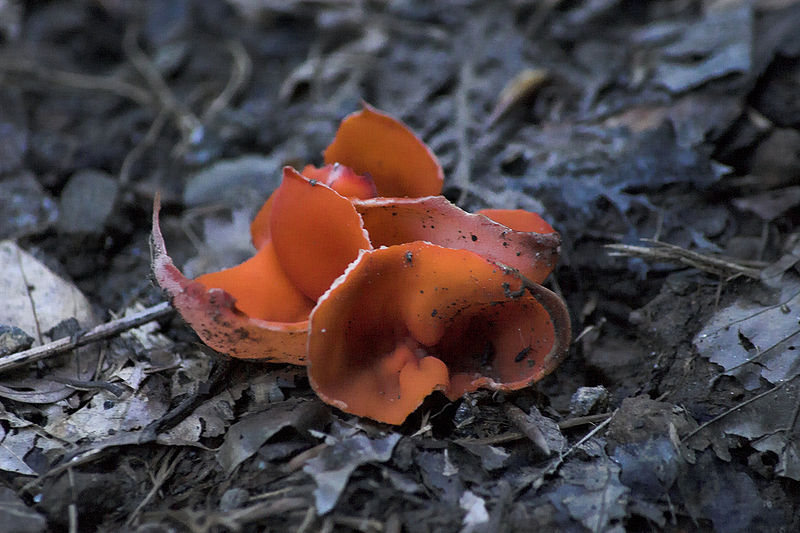Adaptations: Go Orange Peel, go go, go Orange Peel!
Although not much is known about the specifics concerning the ways in which fungi detect changes in their environment, it is evident that fungi are sensitive to such environmental changes. In particular, they are sensitive to open space and light.
Mycelia Growth

The fruiting bodies of different species of fungi exhibit specialized growth. In terms of the Orange Peel Fungus, the mycelium exhibits adaptive growth in two distinct ways:
- The internode lengths of the hyphae may vary. In other words, the length and diameter of the hyphae can increase, resulting in vertical growth of the fungi.
- The branch-angle, or the alignment of the individual hyphae, may vary. This results in horizontal growth of the fungi, and this allows an individual specimen to take advantage of surrounding nutrients and space.
Overall, species of fungi exhibit two types of growth known as "low gear" and "high gear." "Low gear" fungi are slow to expand into surrounding areas. This slow growth allows "low gear" specimens to exploit their initial surroundings and, possibly, become accustomed to local environmental stressors. Conversely, "high gear" fungi are quick to grow and expand into surrounding spaces. Orange Peel Fungus does not exclusively exhibit one type of growth or the other, but it grows according to specific environments.

Light Adaptations
It is hypothesized that fungi most directly respond to light in terms of sporulation. Light may play a role in the maturation of the ascospores in the Orange Peel Fungus. As of right now, more research needs to be done in order to "shed more light" (no pun intended) upon fungi and their mechanisms of light detection/reaction.